The Fjällräven Singi 48 is a super rugged trekking backpack with a wooden frame and the possibility to attach extra side pockets. Read the review or watch the video!
- Size: 48 litre (67 cm x 30 cm x 24cm)
- Weight: 2.161,2 gr (claimed 2.100 gr)
- Price: € 279,95
Size and weight
The Fjällräven Singi 48 is made from G-1000 HeavyDuty Eco S. And this should be no surprise for you if you follow this Swedish brand already for some while. G-1000 is a mix of 65% polyester and 35% cotton and a lot of Fjällräven gear is made out of this rugged fabric. Some parts on the inside are made of 100% polyamide, like the fabric for the volume extension and the inside of the top lid compartment. The G-1000 has a thickness of 500 Denier. I weighted the Fjällräven Singi 48 at 2161,2 grams on my price posting scale and that is a little more than the 2.100 grams Fjällräven claims. This weight does not include the raincover (126,4) and the extra side pockets (68,1 gr and 128,2 gr) that are in the picture.
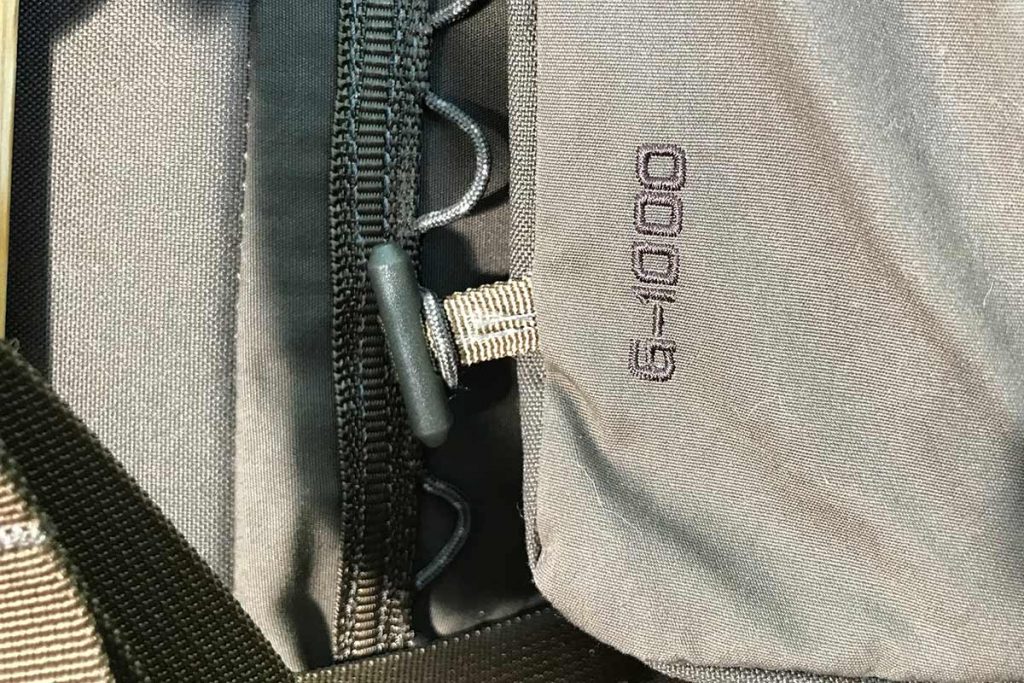
Wooden backbone
‘What you see, is what you get’, could be the motto for the Fjällräven Singi 48. In other words: it is a very honest and straight forward backpack. Everything comes together in the carrying system and the two slats from birch wood that form the backbone of the carrying system. The wood is FSC-certified and from European origin. It is treated with linseed oil to make it water resistant and durable. During testing the wood has proven to be as robust as metal frames and if it breaks, you can easily exchange it. And if you are a DIY guy or girl you can make one yourself!
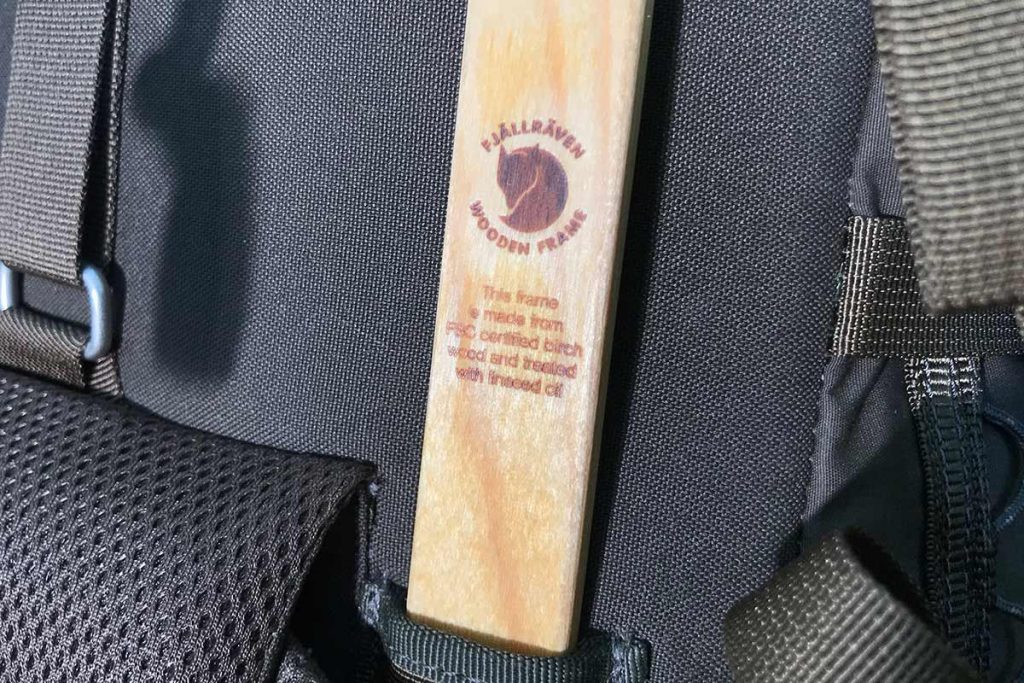
Adjustable back length
The Singi 48 is a Unisex backpack. One model for everyone in only one size, but with an adjustable back length. The minimum back length is 34 cm and the maximum 54 cm. If you want to know what your back length is and how to measure it: follow this link. The adjusting is done with a strap and a buckle and it is not the most consumer-friendly system in the world. Losing the buckle and sliding the shoulder straps up-and-down is the easy part. Reconnecting the two buckle parts is a tour de force and requires too much strength. Especially in the fingers… But… you only have to this once if you set it up correct the first time.
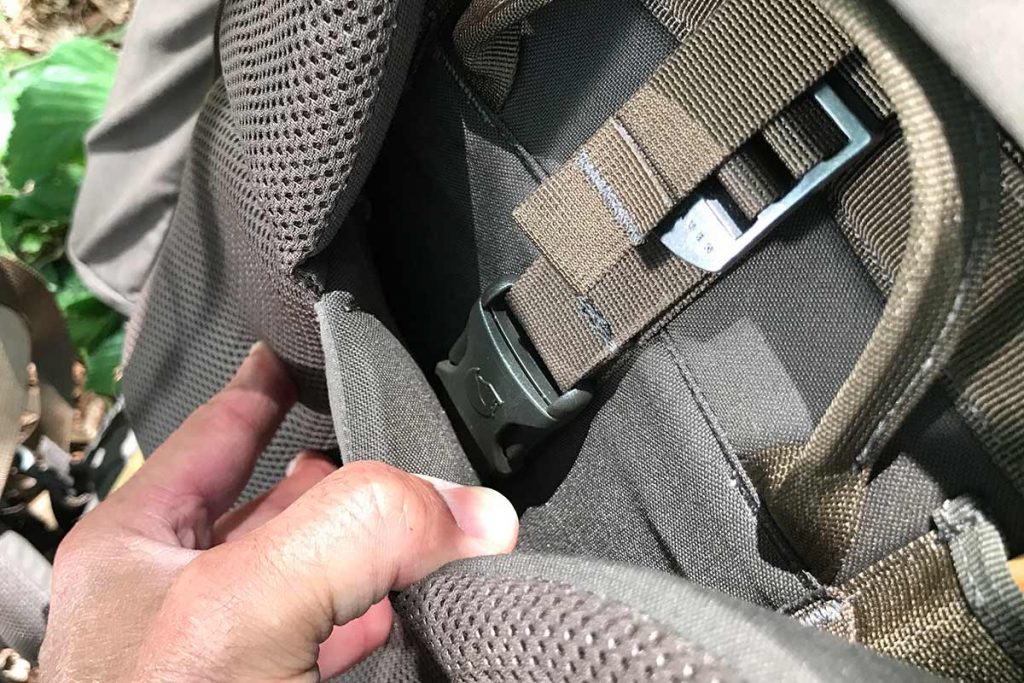
Emergency whistle
The shoulder straps are fixed firmly to the slidingsystem that moves up and down the birch wooden backbone. The shape is a nice S and also most woman will not have a problem with them. The padding is firm but still comfortable. Also, the padding at the back of the shoulders is fine. A mesh webbing covers the shoulder straps to enhance ventilation and moisture control.
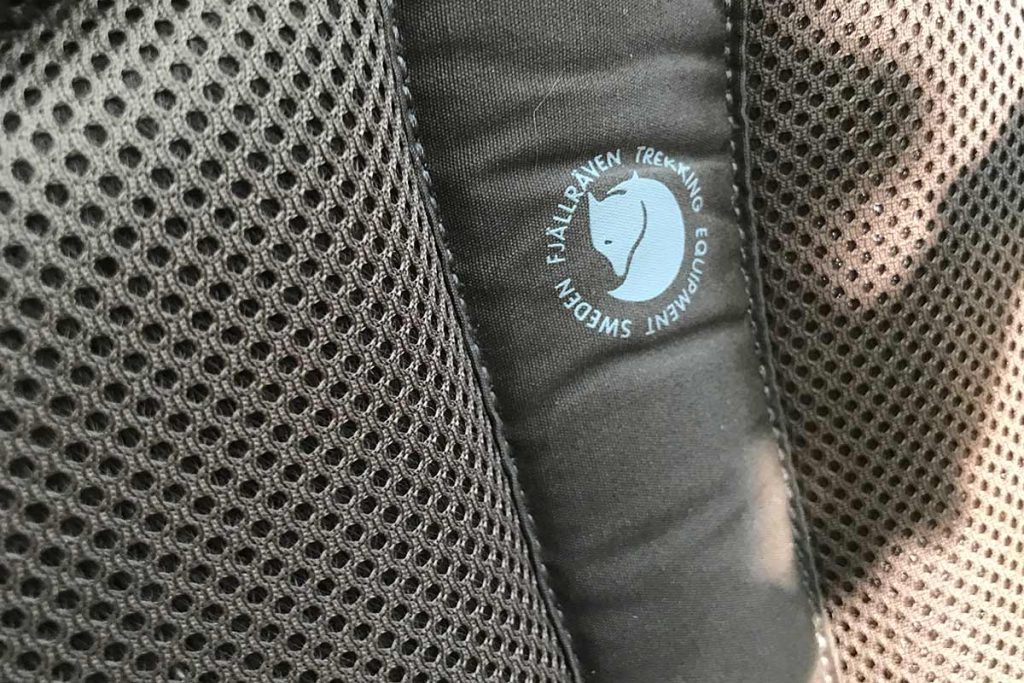
A chest strap is attached to the shoulder straps with sliders. I like them since they are ‘easy’ to move up and down but will not loosen themselves. The buckle of the chest strap has an emergency whistle. Loadlifters connect the top of the shoulder straps with the backpack so you can adjust the pack as a whole to walking level or up- or down the mountain. A very sturdy lift- or carrying loop is situated between the top attachment point of the shoulder straps.
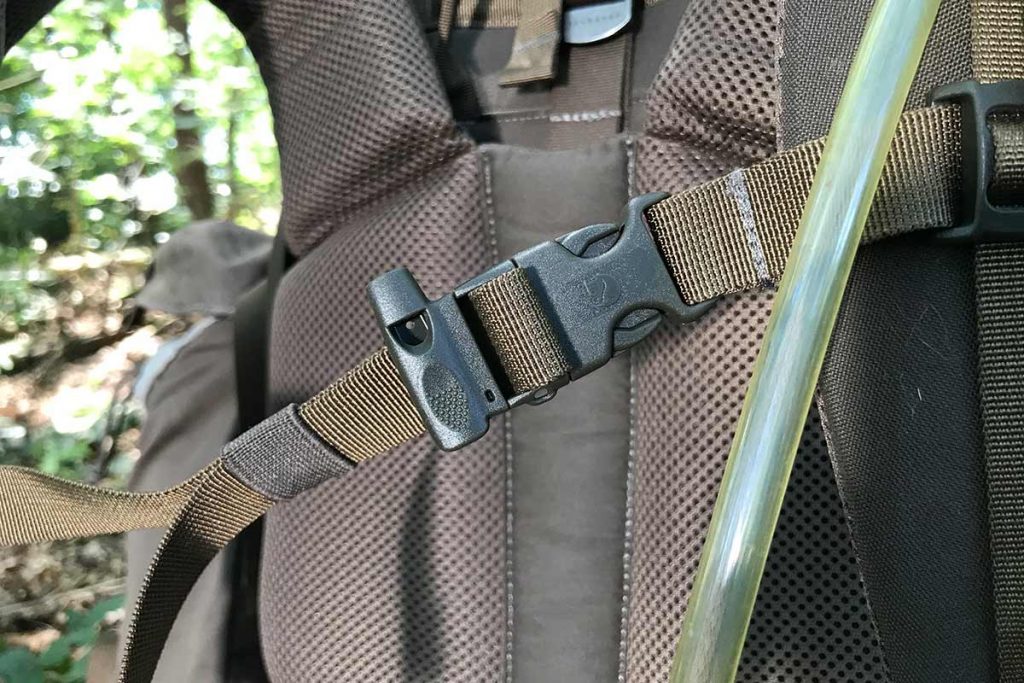
Hip belt
The hip belt is made of the same materials only a bit thicker. It is fixated to the lumber support that is a part of the backpack. The connection between the hip belt and the lumber support is done with Velcro. It takes some strength to get the hip belt out, but it is possible. This is sometimes clever if you need to get your backpack on an airplane.
The hip belt is ergonomically shaped and fits my hips well. For even more comfort and stability, the hip belt has two straps on each side. The hip belt can be adjusted from approx. 66 cm to 146 cm. The hip belt has two pockets with zippers. They are large enough for a pocketknife, a power bar or some other small stuff. A small advice: never putt the smartphone in a hip belt pocket. Hip belts are curved and sometimes a lot of stress is applied to whatever is in them.
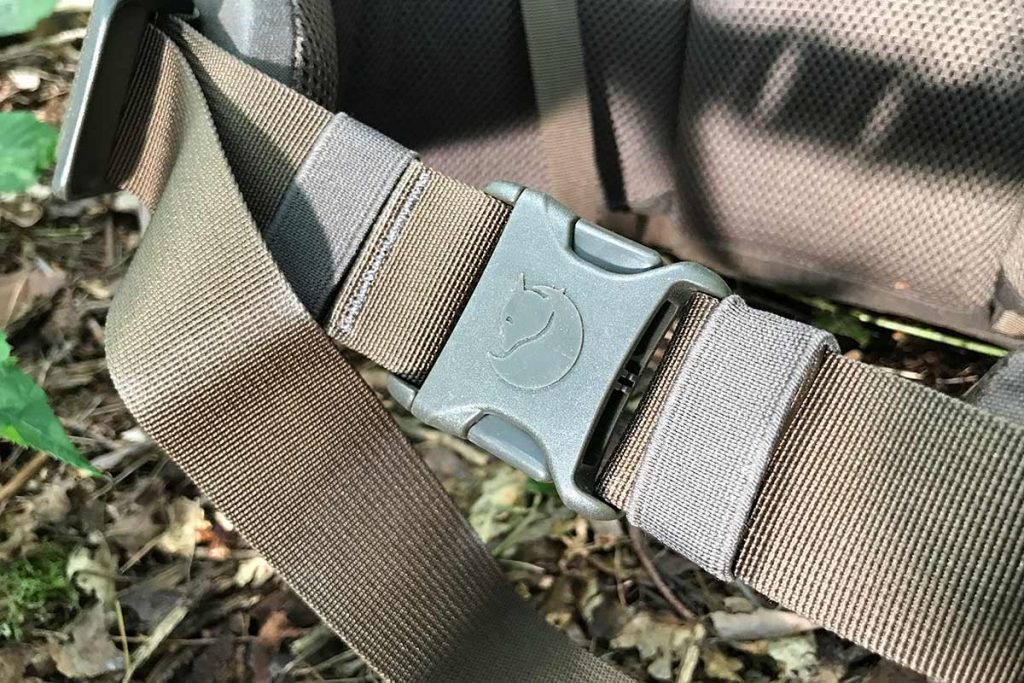
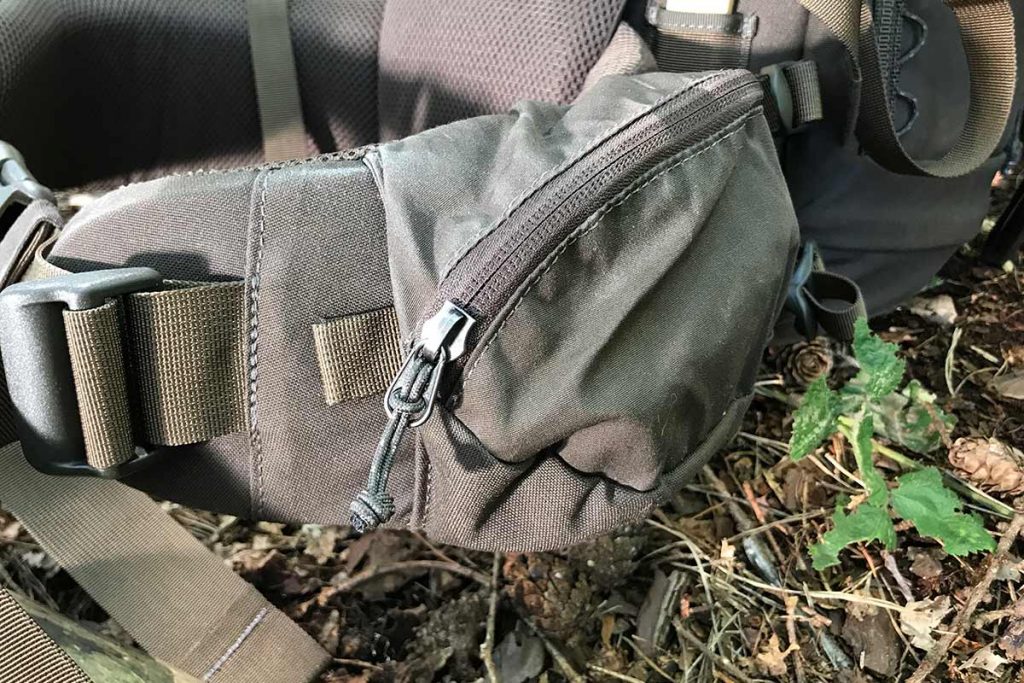
The hip belt has two pockets with zippers. 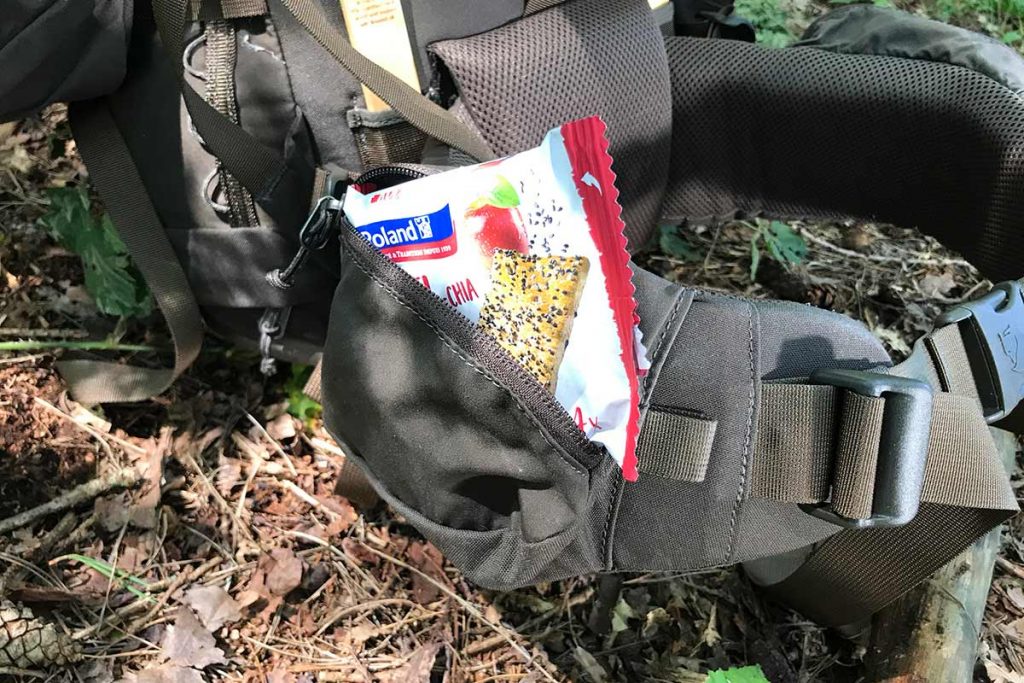
In the pockets is space for a pocketknife or some food.
Carrying system in practice
If you have read or seen previous backpack reviews of me, then you might know that I like close contact backpacks better than the airy ones. The Fjällräven is a close contact backpack that sits firm to my back. This means that whatever I put in it, – up to about 15 kg for me – it will always follow my moves. It will not give me any surprises when I am swinging around a tree, a rock or just passing steppingstones in a river swiftly. The carrying system in total I like a lot. And … there is even some ventilation between the shoulders and the hipbelt.
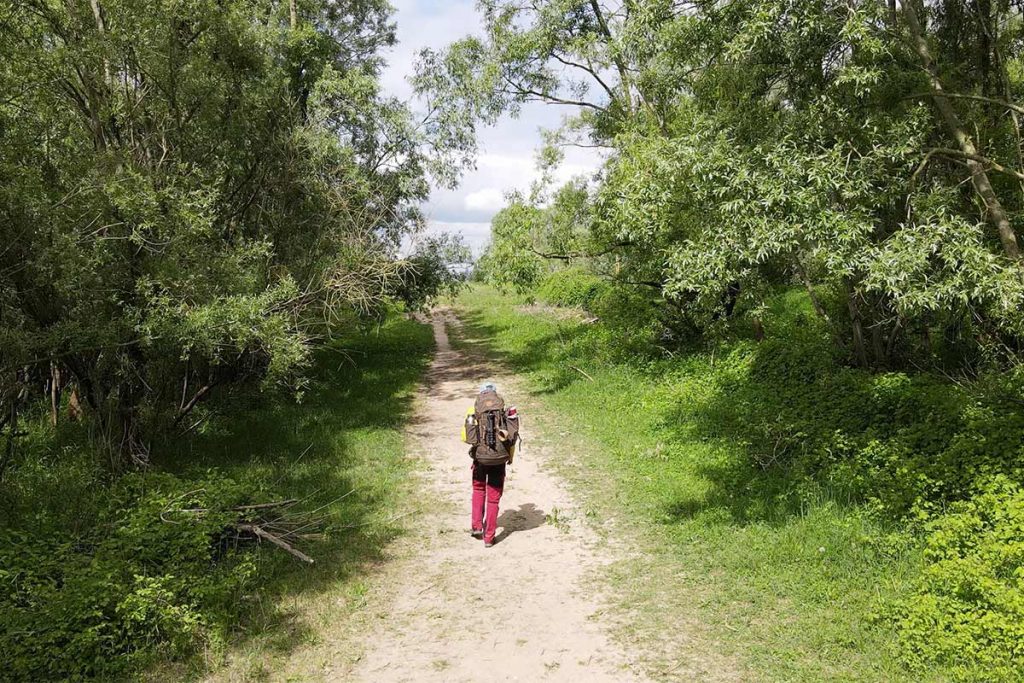
Top loader
The Fjällräven Singi 48 is a top loader backpack; everything you stuff in it enters from the top. Although… this is not completely true. On the waterproof bottom you will also find a zipper. Usually this is the place where I put my sleeping bag and a bottom zipper is convenient. Most backpacks with a bottom opening have an internal divider for the sleeping bang compartment, but not the Singi 48.
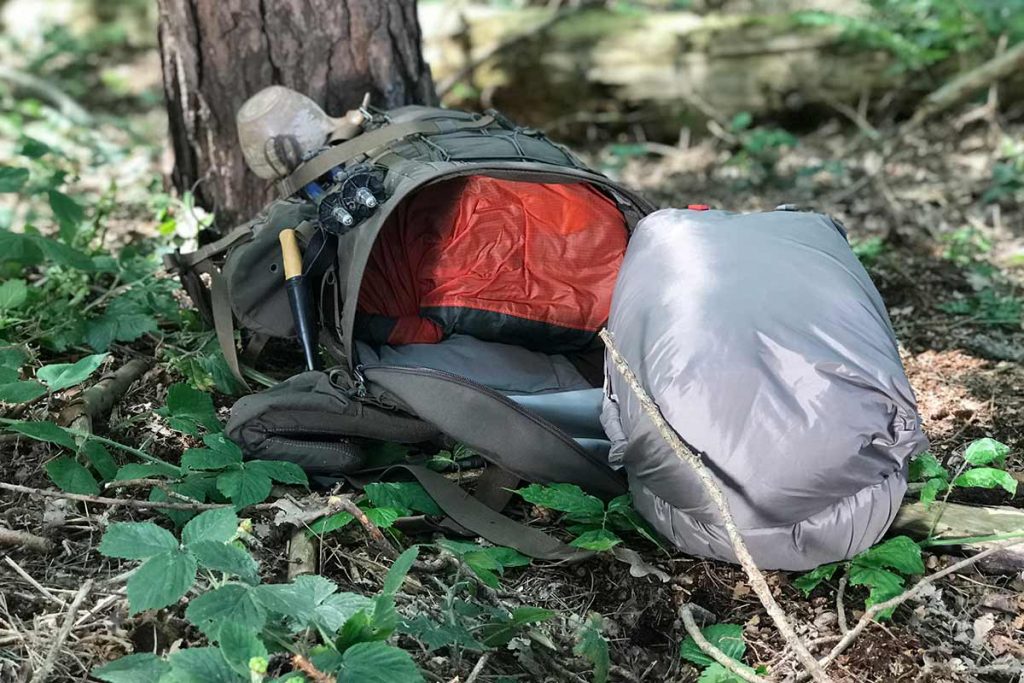
The opening at the top is large and stowing is easy. The top also has an extension so you can put more stuff in the backpack. This extension is about 20 cm high and has a diameter of about 30 cm so that gives an extra 14 litres. Funny thing is: Fjällräven does not mention this in the specs. The main compartment and the extension are closed with a cord and toggle construction. A large compression strap on top of this takes pressure of the cord and is handy for storing a tent or a mattress securely under it.
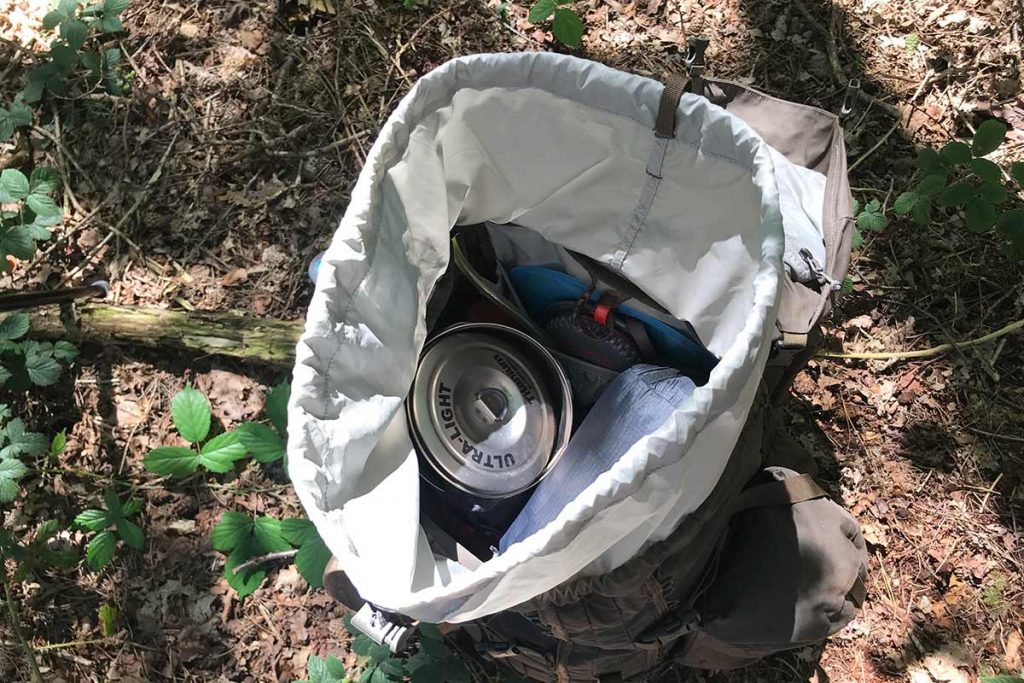
The Singi 48 is a top loader backpack. 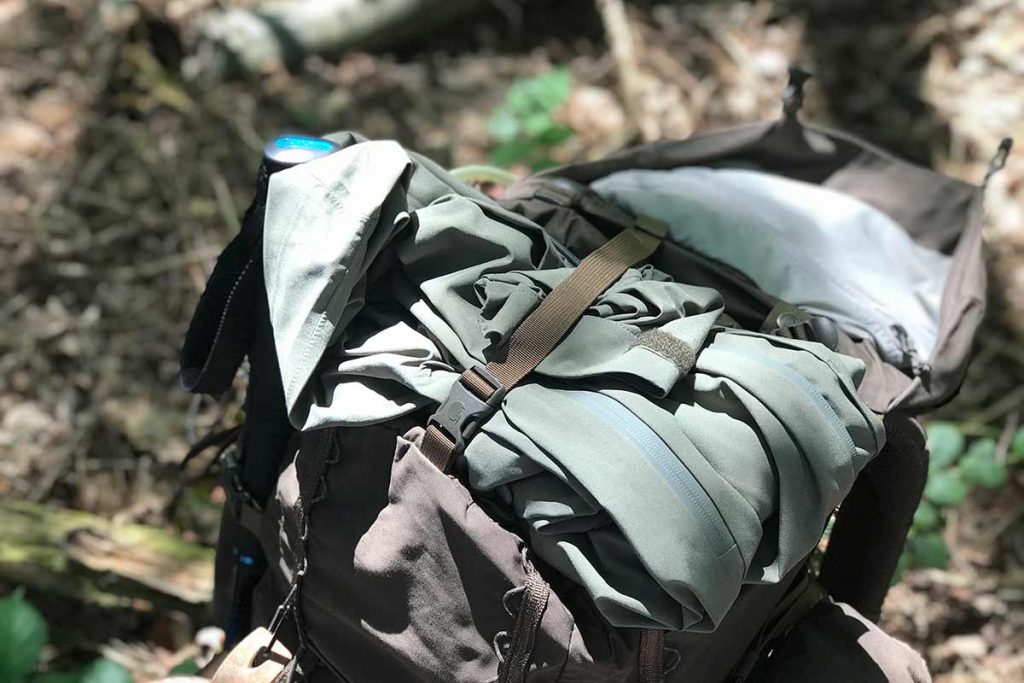
Under the strap you can store for example a tent or a hardshell.
Inside the main compartment is close to the back a pocket with an attachment point for a hydration bladder. The opening for the hose is on the left side; one on the right is missing. A pity if you are lefthanded.
Fjällräven Singi 48 top lid
The main compartment and the extension are covered by a detachable floating top lid. Floating means that I can adjust the height at all four corners to create space for the extension. Making top lids totally detachable is in principle mostly done so one can use the top lid separately as a belly or hip pack. In the case of the Singi it is more done to leave at home when you don’t need it.
The top lid has a zipped pocket on the inside and on the outside. The one on the outside has a keychain holder. I would have put that on the inside; I find it irritating if I want to get something out of the outside pocket that my keys are always in the way. When I am hiking, I don’t need them there: I put them with my passport and wallet in the secure – not easily accessible – inner pocket.
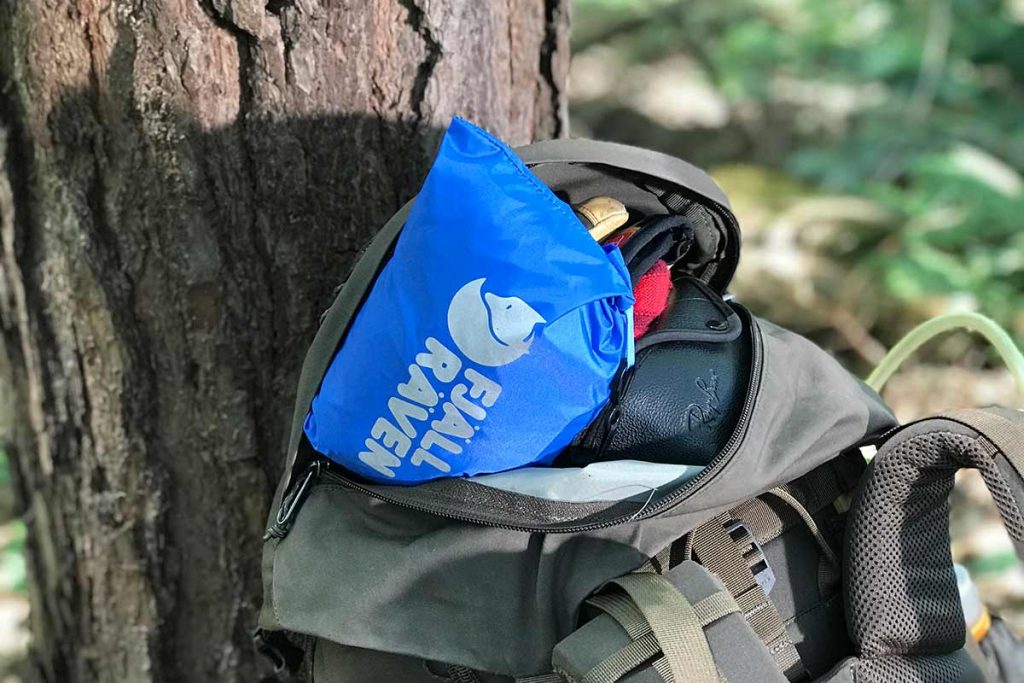
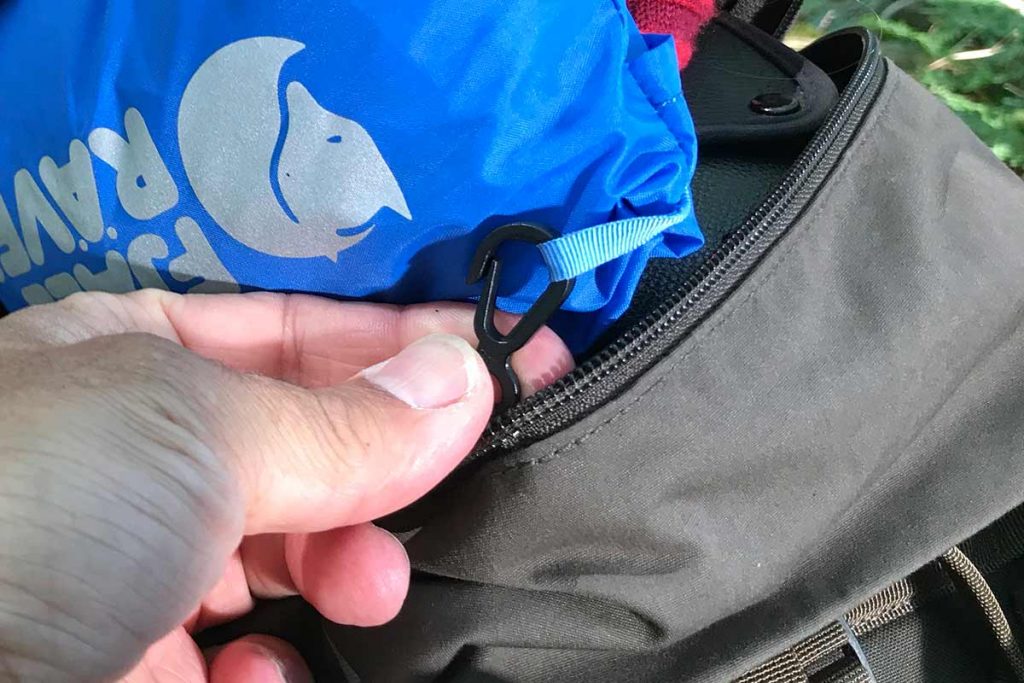
Daisey chains and external storage
I wrote it above already: what you see, is what you get. The main compartment and the top lid are straight forward and easy and practical in use. The exterior storage possibility’s is what makes Fjällräven Singi 48 a very well thought through backpack. On the top lid the backpack has two rows of Daisey chains (loops) and pack itself it has six rows of them that run from top to bottom. These Daisey chains are designed to connect for example a Singi Gear Holder (€25,95) or Singi Side Pocket (€ 32,95). In this manner I can adapt the Singi to my needs and I love them. But the Daisey chains work with a lot of other stuff too, like my beloved Kupilka mug.
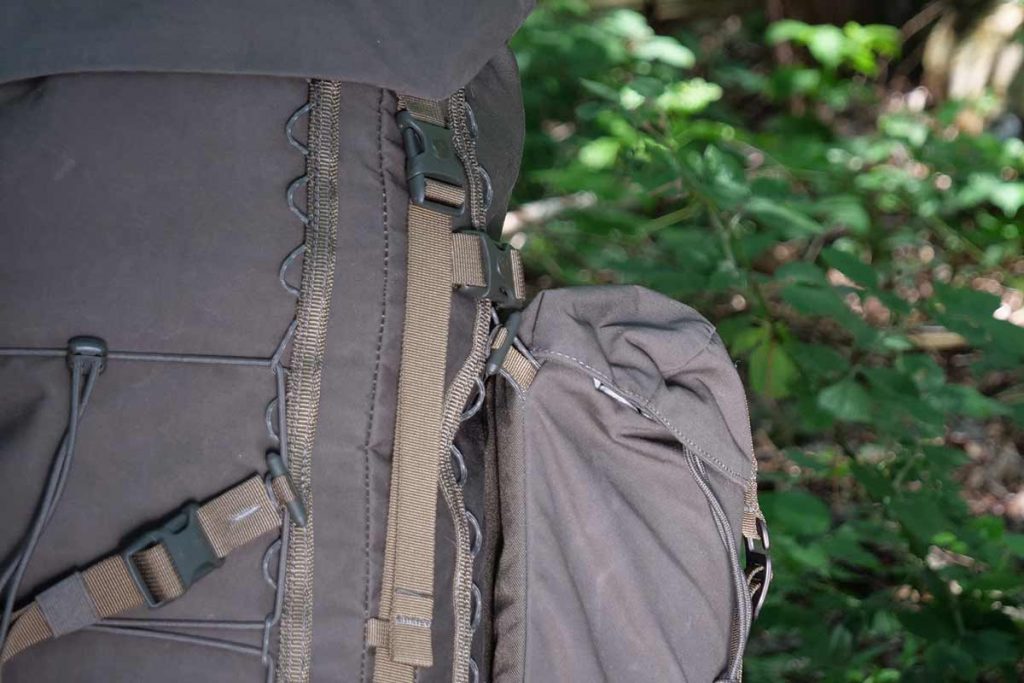
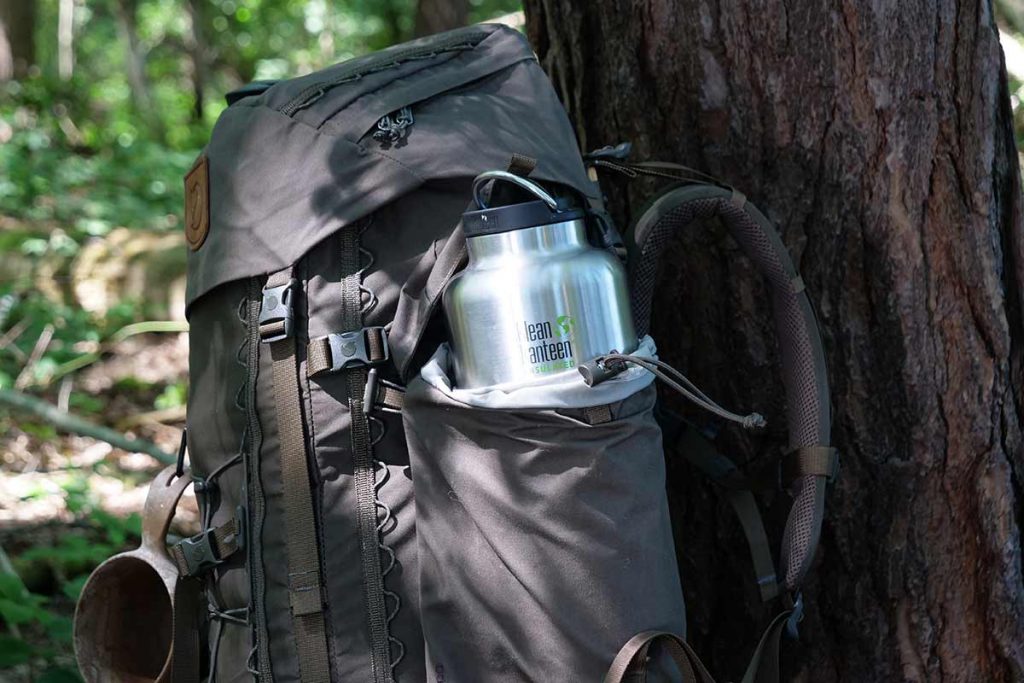
The Singi Side Pocket is a super accessory. 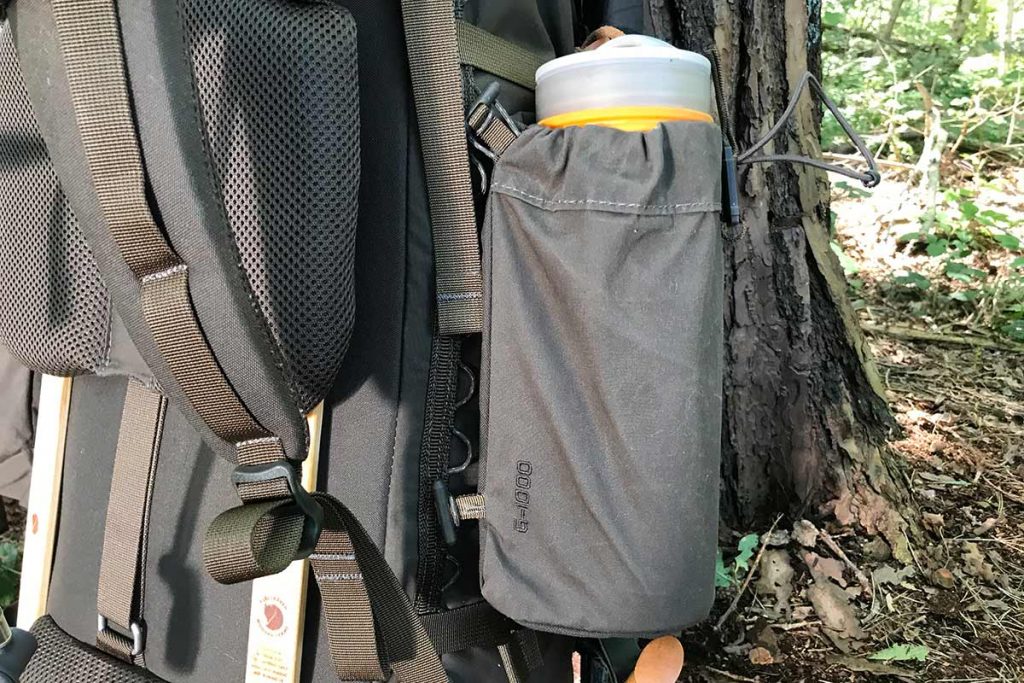
The Singi Gear Holder does not have a lid.
More external storage
On the back the Singi has a bungy cord that loops through the loops of the… Daisey chains. The bungy cord is practical to store a wet (or dry) jacket, a towel or a mattress. There is also a strap with buckle on the back. Connected with toggles to the… Daisey chain. On each side the Fjällräven Singi 48 has two compression straps with buckles that can be used to store something underneath like trekkingpoles or a shovel. Or a gun if you are a hunter and fishing rods if you like fishing. But with all these extra storage possibilities it also becomes clear that the Fjällräven Singi 48 is missing a few backpack essentials.
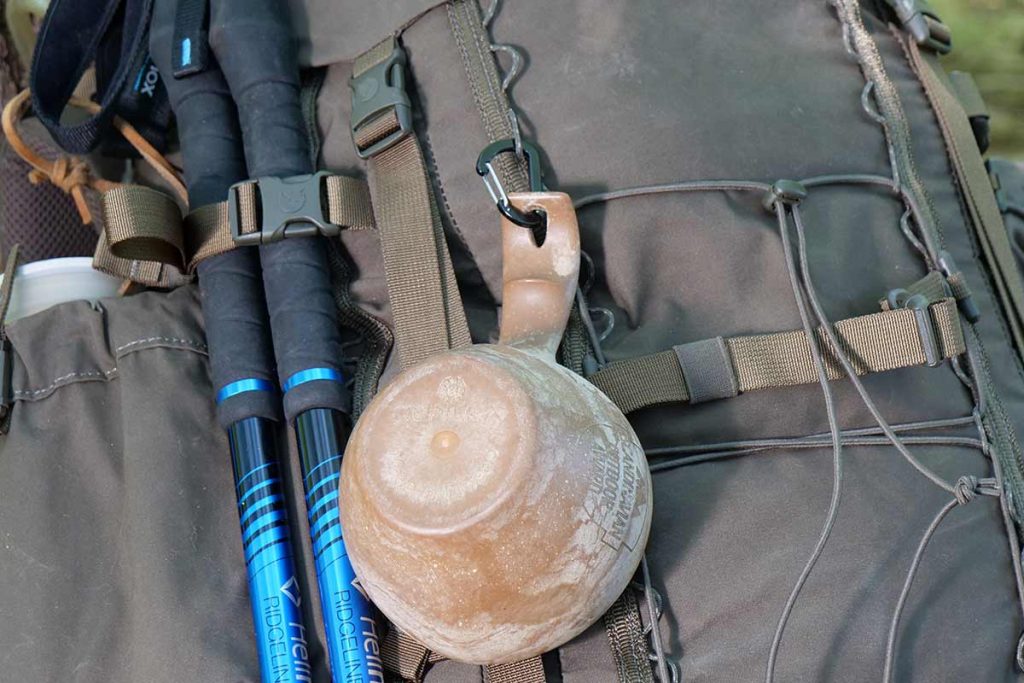
What’s missing
The things I do miss on the Singi 48 of which Fjällräven claims it is a trekking backpack are fixed loops for trekkingpoles and a at least one flexible bottle holder. Also, on the bottom of the pack I miss two straps especially for the attachment of a foam or a self-inflatable sleeping pad. And yes, I could miss reflection but with a backpack as green as this for people who love being in the green stuff… I’ll bring my own and hang it on the… Daisey chain. At least if I don’t want to use the raincover.
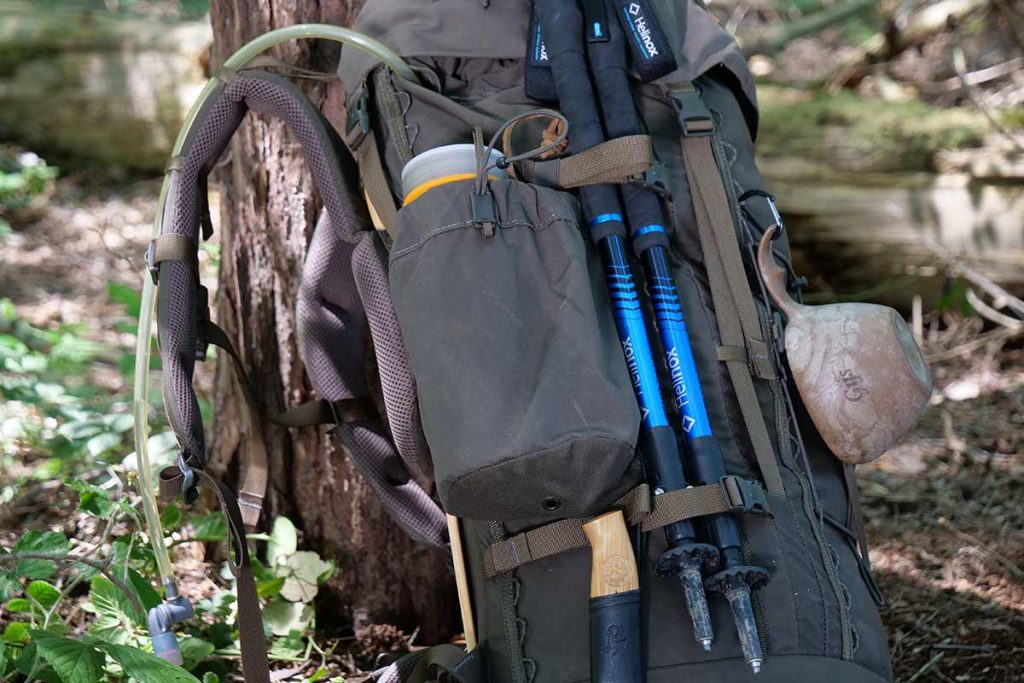
Raincover
Last but not least: the raincover. It comes with the backpack and sits in the top lid pocket and is attached to the keychain holder. And it is blue. Very blue. I like this since in case of an emergency it is very visible in a green scenery. It will not work in an icy scenery though. The raincover has a super cord around and a connection toggle and rope at the sides. These two prevent wind and rain blowing in the raincover so you will not end up with a balloon on your back. And on the back there is a very big reflective Fjällräven logo. Super!
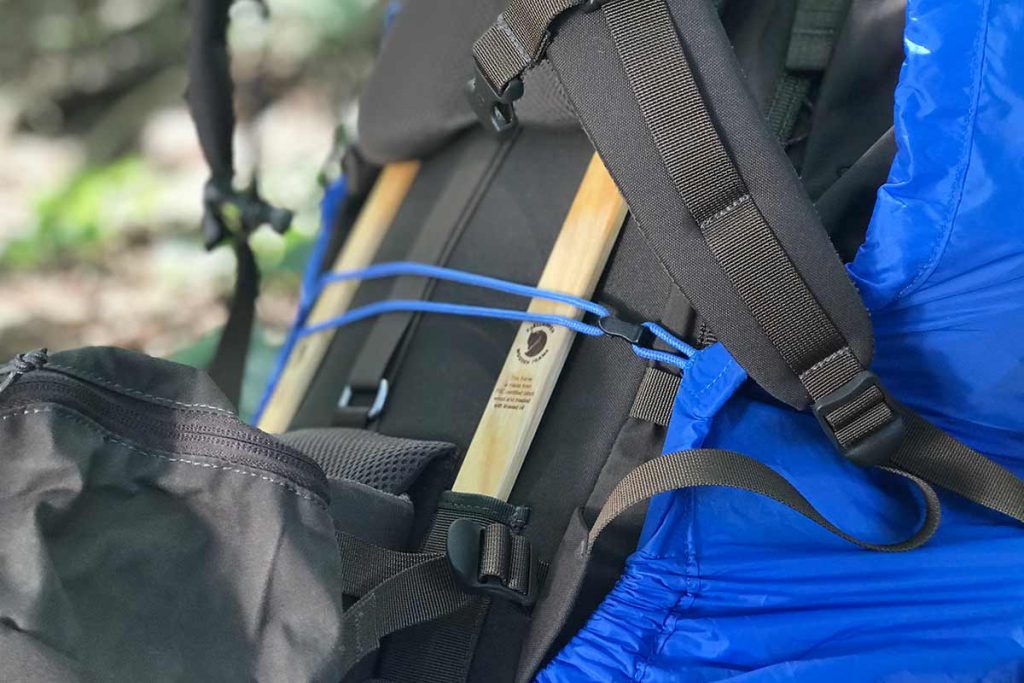
Sustainability
I have been a member of the Scandinavian Outdoor Awards for over 10 years by now and since last year I have been invited twice for the Outdoor by ISPO Awards. On both jury’s we take sustainability very serious. And it is one of the things I take into account in my rating. A lot of brands are dealing with sustainability and Fjällräven does this already for a long time. The G-1000 is absolutely tuff and hardwearing. That is Sustainability too. Next to that is G-1000 has been impregnated with a PFC-free material to make it more water-repellent. FYI: PFC’s are very harmful for nature. And G-1000 HeavyDuty Eco S is made from recycled polyester and bio cotton.
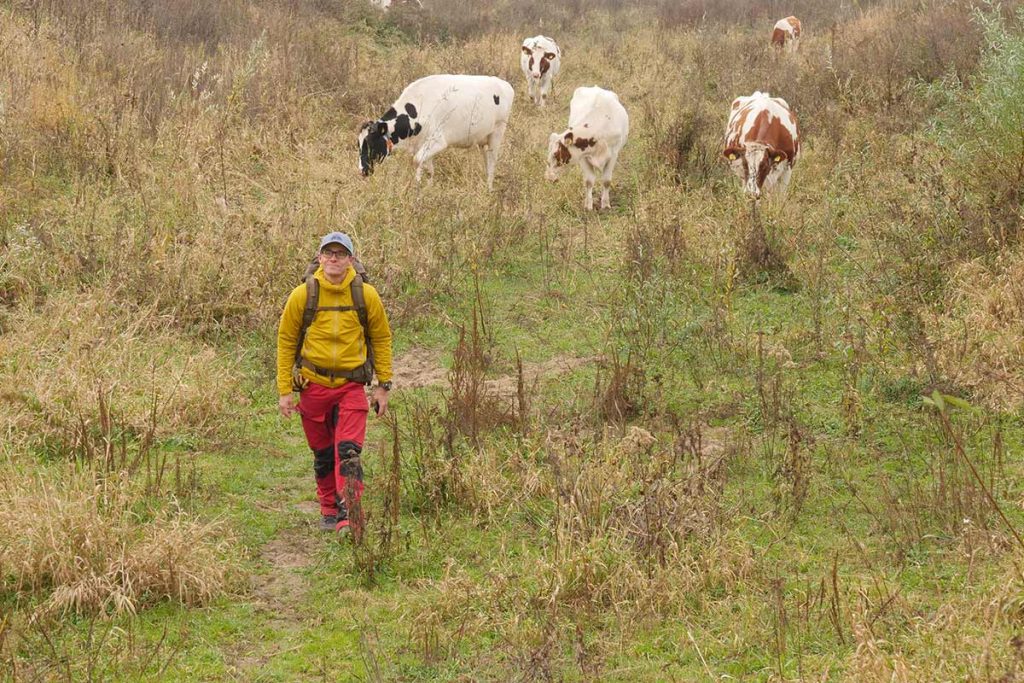
Verdict
The Fjällräven Singi 48 backpack has proven to be a sturdy and comfortable backpack. One-size-fits-all will definitely not work for everyone, but for most it will. For me it worked well. I like the firm carrying characteristics of the Singi 48 and that it is a close contact backpack. I like that is made from G-1000 HeavyDuty Eco S, a durable and sustainable choice. And the birch wood stays… It makes the Singi stand out from the crowd. The top loader is fine and the zipper at the bottom a bonus. The top lid is spacious. I like a keychain holder in the inside pocket better.
I tested the backpack with 15 kg max but a bit more should be no problem. The weight of the backpack is a bit heavy but understandable if you look at the materials and the bullet proof construction. The reflective blue raincover is super. What I miss are loops for trekkingpoles, an inlet for the hose on the right side and a bottle holder. The fact that I can buy it separately helps, but makes the pack also more expensive. The Fjällräven Singi 48 retails for € 279,95 and that is a bit high. Overall, I rate the Fjällräven Singi 48 at 8.8 out of 10 total.
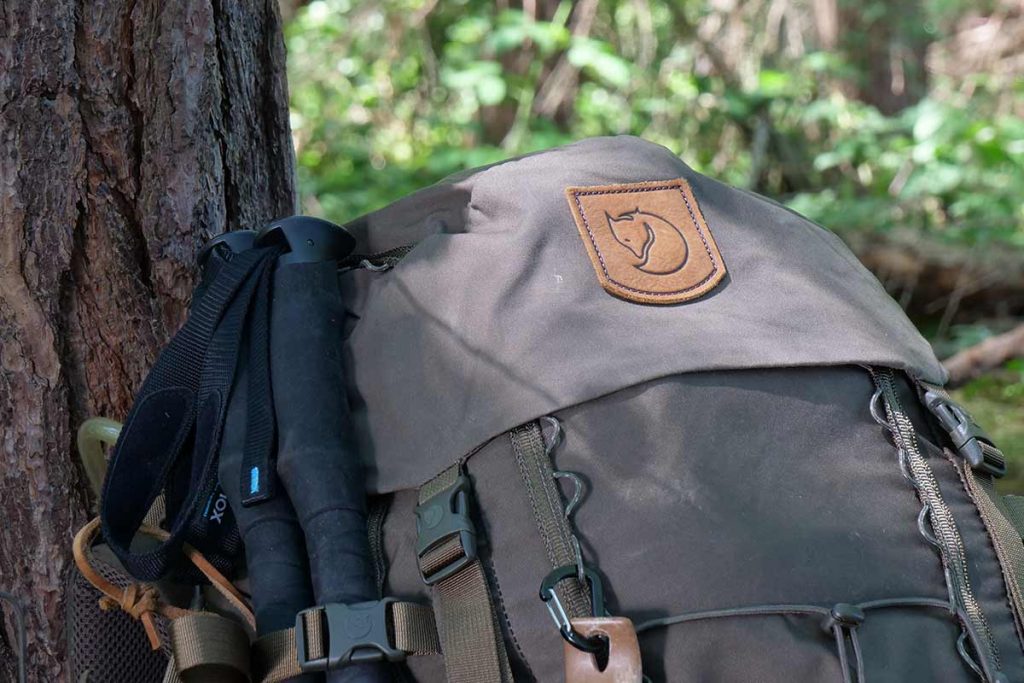
TIP: How to measure your back length?
Big question: how do you measure your back length? Easy, just follow the steps below!
The first measuring point is the 7th vertebra or C7. This is the bumpy bone in your neck when you tilt your head forward. The second point you determine by putting your hands on your hipbones. ‘Draw’ a line between the two of them en the second point is in the middle of this (almost) horizontal line. The distance between point 1 and 2 is your back length. And… Yes, you can’t do this alone so ask a friend (or a shop employee) to help you.
Information
International: www.fjallraven.com
Dutch market: www.fjallraven.com
